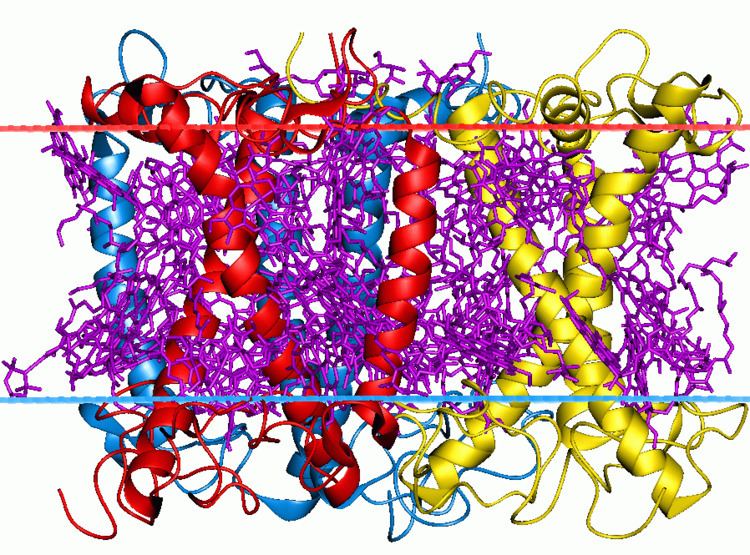Symbol Chloroa_b-bind InterPro IPR001344 SUPERFAMILY 1rwt | Pfam PF00504 SCOP 1rwt OPM superfamily 1 | |
 | ||
The light-harvesting complex (or antenna complex) is an array of protein and chlorophyll molecules embedded in the thylakoid membrane of plants, which transfer light energy to one chlorophyll a molecule at the reaction center of a photosystem.
The antenna pigments are predominantly chlorophyll b, xanthophylls, and carotenes. Chlorophyll a is known as the core pigment. Their absorption spectra are non-overlapping in order to broaden the range of light that can be absorbed in photosynthesis. The carotenoids have another role as an antioxidant to prevent photo-oxidative damage of chlorophyll molecules. Each antenna complex has between 250 and 400 pigment molecules and the energy they absorb is shuttled by resonance energy transfer to a specialized chlorophyll-protein complex known as the reaction center of each photosystem. The reaction center initiates a complex series of chemical reactions that capture energy in the form of chemical bonds.
For photosystem II, when either of the two chlorophyll a molecules at the reaction center absorb energy, an electron is excited and transferred to an electron acceptor molecule, pheophytin, leaving the chlorophyll a in an oxidized state. The oxidised chlorophyll a replaces the electrons by photolysis that involves the oxidation of water molecules to oxygen, protons and electrons.
Under changing light conditions, the reversible phosphorylation of light harvesting chlorophyll a/b binding proteins (LHCII) represents a system for balancing the excitation energy between the two photosystems.
The N-terminus of the chlorophyll A-B binding protein extends into the stroma where it is involved with adhesion of granal membranes and photo-regulated by reversible phosphorylation of its threonine residues. Both these processes are believed to mediate the distribution of excitation energy between photosystems I and II.
This family also includes the photosystem II protein PsbS, which plays a role in energy-dependent quenching that increases thermal dissipation of excess absorbed light energy in the photosystem.
